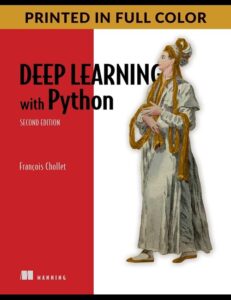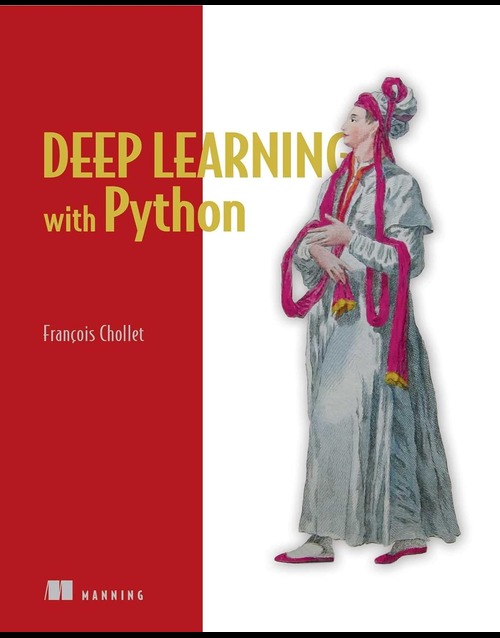Python is one of the most popular languages for deep learning, as its simplicity and readability allow for a strong focus on learning complex algorithms and models.
When it comes to mastering deep learning with Python, many people seek out specialized books that simplify the learning curve and provide hands-on, practical knowledge.
Among the top books available, “Deep Learning with Python” by François Chollet has emerged as a highly recommended resource, alongside other notable titles like “Python Deep Learning” by Ivan Vasilev and “Hands-On Machine Learning with Scikit-Learn, Keras, and TensorFlow” by Aurélien Géron. Let’s explore some popular options, their content highlights, and price points to help you choose the right book for your deep learning journey.
Deep Learning +Deep Learning with Python“Deep Learning with Python” by François Chollet
Written by François Chollet, the creator of Keras, a popular deep learning library in Python, “Deep Learning with Python” is known for its clarity and depth.
The book is designed for beginners to intermediate learners who want to understand the foundations of deep learning.
Chollet’s book breaks down complex concepts into digestible segments, focusing on practical applications through hands-on examples and step-by-step coding exercises. Currently, this book is priced at around $40 to $55 in paperback, depending on the edition and retailer.
It is also available as an eBook, often priced slightly lower, around $30 to $45. This book provides a well-rounded foundation, making it ideal for those seeking a structured approach to deep learning
“Hands-On Machine Learning with Scikit-Learn, Keras, and TensorFlow” by Aurélien Géron
Aurélien Géron’s “Hands-On Machine Learning Book with Scikit-Learn, Keras, and TensorFlow” is another excellent resource for mastering deep learning with Python.
This book is comprehensive and practical, featuring a step-by-step approach to both machine learning and deep learning concepts.
Géron covers a wide range of topics from neural networks to convolutional and recurrent networks, using popular libraries like TensorFlow and Keras.
This book is priced around $45 to $60, with an eBook version typically costing a bit less. The focus on real-world applications and coding exercises makes it an excellent choice for learners aiming to implement deep learning in practical projects.

“Python Deep Learning” by Ivan Vasilev
“Python Deep Learning” by Ivan Vasilev is another valuable resource for those looking to explore the deep learning landscape with Python.
Vasilev’s approach is practical and code-oriented, covering a broad range of deep learning algorithms and models. The book includes chapters on neural networks, convolutional neural networks (CNNs), generative adversarial networks (GANs), and reinforcement learning, among others.
This book typically costs between $40 and $55 in paperback, with a slightly lower eBook price.
It’s a solid choice for intermediate learners who are familiar with Python and basic machine learning concepts and want to delve deeper into the intricacies of deep learnin
“Deep Learning: A Practitioner’s Approach” by Adam Gibson and Josh Patterson
While not exclusively focused on Python, “Deep Learning: A Practitioner’s Approach” by Adam Gibson and Josh Patterson is worth mentioning.
This book provides insights into deep learning theory and practice, covering key concepts and techniques with practical examples. It explores neural networks, deep architectures, and training models with real-world applications.
The price for this book ranges from $45 to $60 in paperback format. Although not a beginner’s book, it serves as a valuable resource for practitioners who want to understand deep learning’s technical foundations and gain insights into industry applications.
“Deep Reinforcement Learning Hands-On” by Maxim Lapan
“Deep Reinforcement Learning Hands-On” by Maxim Lapan introduces readers to reinforcement learning within the context of deep learning.
Reinforcement learning is a branch of machine learning that has gained attention due to its applications in robotics, gaming, and more.
This book covers essential reinforcement learning algorithms with a focus on practical implementation using Python.
It is well-suited for intermediate to advanced learners who already have a solid grasp of Python and basic deep learning concepts. The paperback version costs around $45 to $55, while the eBook is slightly less expensive. This book is ideal for those looking to explore a specialized area of deep learning in-depth.
“Deep Learning for Computer Vision with Python” by Adrian Rosebrock
Computer vision is one of the most popular applications of deep learning, and Adrian Rosebrock’s “Deep Learning for Computer Vision with Python” is a go-to book for those interested in this field. The book covers image processing, object detection, facial recognition, and other computer vision tasks using deep learning techniques. Priced between $50 and $70, this book is comprehensive, with numerous hands-on examples and real-world applications. Rosebrock’s book is ideal for readers who are passionate about computer vision and want to build their expertise in this specific area of deep learning.
Comparing Prices and Choosing the Right BooThe price of deep learning books can vary depending on the format (paperback vs. eBook), the retailer, and sometimes even the region.
In general, paperback versions of these books range between $40 and $70, while eBooks are typically priced a bit lower, around $30 to $60. It’s worth checking online platforms like Amazon, O’Reilly, or Packt for potential discounts or bundles.
Additionally, many publishers offer free sample chapters online, allowing readers to get a feel for the book’s content before making a purchase.
Conclusion
Choosing the right “Deep Learning with Python” book largely depends on your current skill level, goals, and budget.
Whether you are a beginner aiming to build a foundation or an advanced learner interested in specialized fields like reinforcement learning or computer vision, there is a book for you.
Consider starting with François Chollet’s “Deep Learning with Python” if you’re a newcomer, or dive into “Hands-On Machine Learning with Scikit-Learn, Keras, and TensorFlow” by Aurélien Géron for a broader machine learning and deep learning perspective. With so many quality resources available, you’ll be well-equipped to master deep learning and leverage Python to bring your projects to life.

